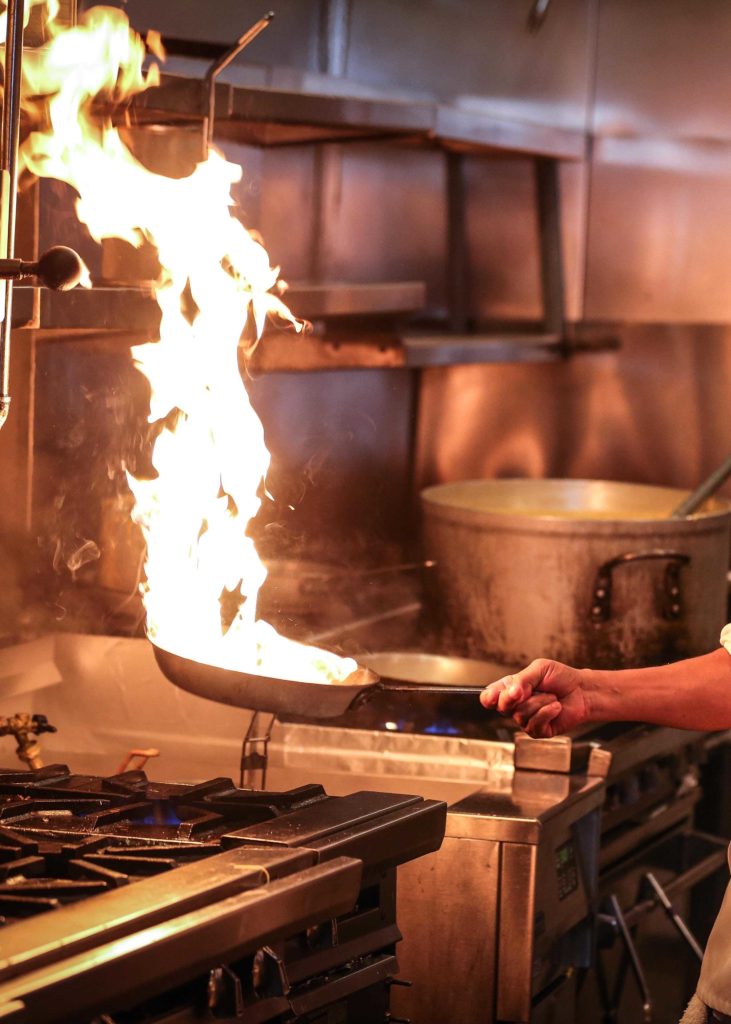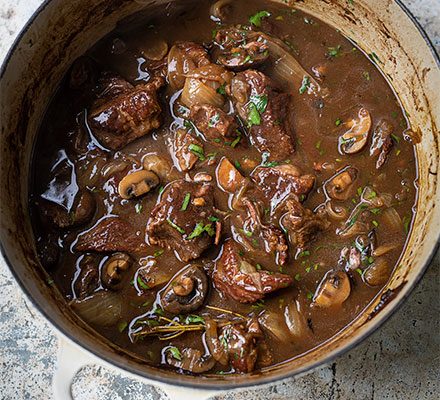Can Cooking with Alcohol Actually Get You Drunk?
It’s no secret that cooking with alcohol can be a great flavor enhancer when used in moderation during meal prep.
Using wine and beer to booze up your recipes is commonplace but a dash of something stronger like rum, whisky and vodka can also add depth and intensity to an otherwise simple dish.
But what happens to the alcohol content in a dish during the cooking process? Is it possible to cook off all the alcohol in a pot of slow-cooked wine-braised oxtail for instance? Let’s find out
Why Eating Yourself Drunk is Not an Option
As a substance, the chemical composition of alcohol makes it quite volatile. What this means is that alcohol molecules will evaporate not just when they reach boiling point, but any time they’re exposed to air.
Despite this ability to evaporate, traces of alcohol still remain in a finished dish. Alcohol bonds with water and other ingredients in a recipe at a molecular level, but how much sticks around at the end depends on secondary factors like the cooking temperature and the cook time.

Cooking at a higher temperature accelerates evaporation, while prolonged cooking times make the cumulative evaporation more significant. It’s important to note, however, that complete elimination of alcohol doesn’t occur at any point.
Generally, dishes containing alcohol as an ingredient retain 40 percent of the original amount after 15 minutes, 35 percent after 30 minutes, and 25 percent after an hour.
A vital variable to keep in mind is that the alcohol by volume (ABV) of beer is usually less than 10 percent, while the ABV of rum and whisky is North of 40 percent.
Consequently, with all other factors held constant, a cooked dish made with a stout beer is less alcoholic than one made with rum.
It’s highly unlikely though that food cooked with alcohol can lead to intoxication; the amount of alcohol in most recipes is so small that an adult wouldn’t feel its effects.
Let’s now take a look at how different alcohol types can help liven up that dish you’ve been dying to try out.
Cooking with Alcohol: White Wine Vs. Red Wine
The beauty of cooking with a crisp dry white wine like the Drosty Hof Premier Grand Cru lies in its versatility.
Made using flavorful sauvignon grapes, this wine offers a broad spectrum of sweetness that can be a welcome addition in sauces, marinades or when poaching chicken and other lightly flavored cuts of meat.
Alternatively, a medium-bodied fruity red wine like the Drosty Hof Claret Select features strawberry and mulberry undertones and will blend perfectly when mixed into meat-heavy dishes or cheesy pasta servings.
The flavor notes are light enough not to overpower a dish, but complex enough to meld with other ingredients in a recipe.
Beer
A time-honored favorite stout like Guinness contains natural enzymes that have a tenderizing effect on meat, making this the perfect addition to most marinades. Mix any leftover beer into your basting sauce and use it to flavor meat when grilling or roasting.

Experimentation is key here, so try different types of beers to discover the best flavor match that works for you. Beer is pretty versatile and can also be used to enhance a pot of spicy beef stew or make the fluffiest beer bread ever since it contains natural yeast.
Rum
If you fancy the occasional dramatic presentation during meal prep, rum is your go-to liquor for a caramelized flambé finish that could put Gordon Ramsay to shame.
Flambéing imparts a savory-sweet flavor to dessert dishes like banana fosters and crepes Suzette. This way you’ll be able to quickly cook off the alcohol while retaining the signature zesty rum flavor.
You might not be much of a drinker but cooking with alcohol is something you should truly consider if you’re looking for a culinary adventure to kick your recipes up a notch. The layered flavors, different textures and complex aromas left behind after most of the alcohol content is cooked off is exactly what brings your dishes to life.
